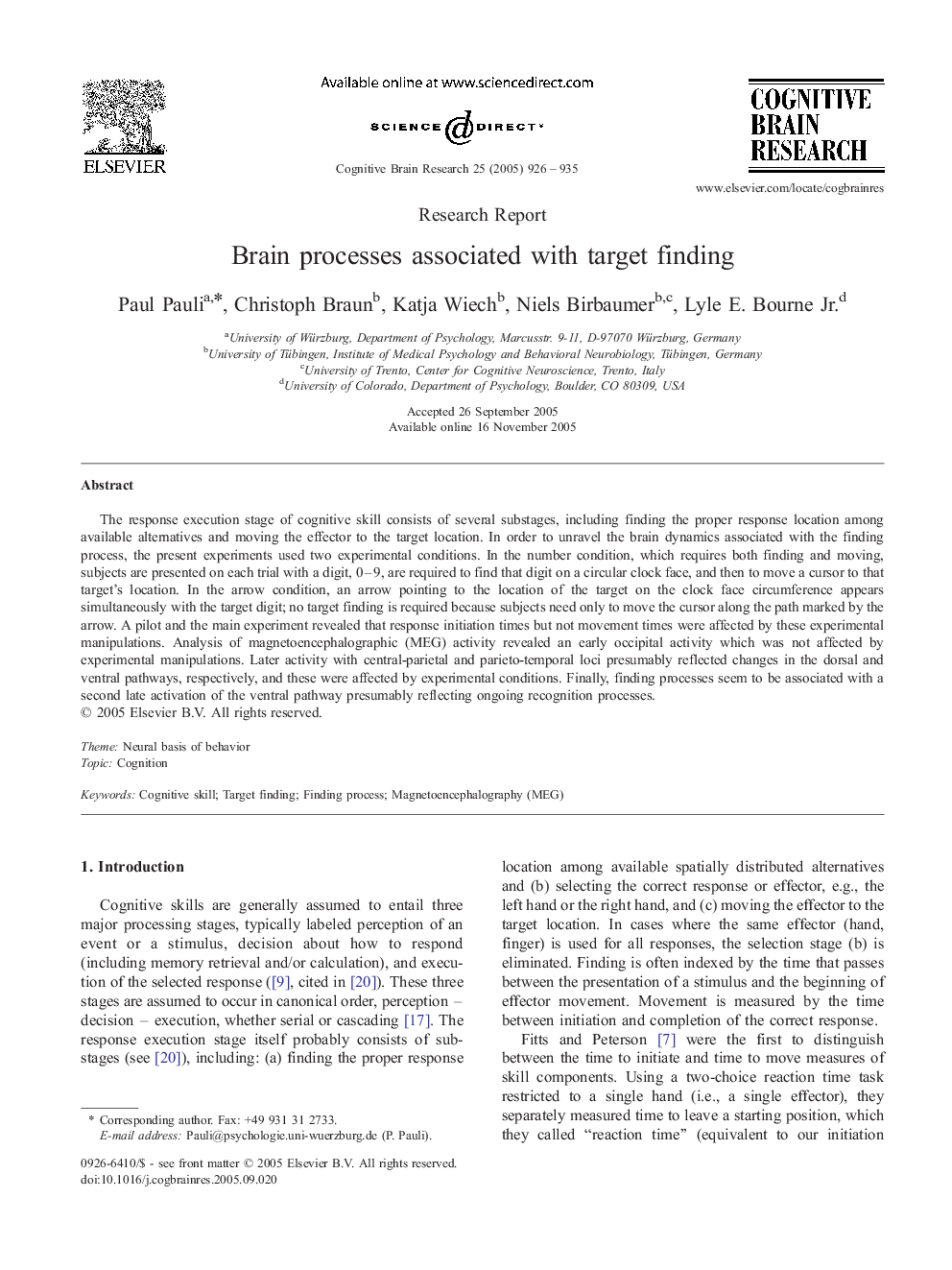| Article ID | Journal | Published Year | Pages | File Type |
|---|---|---|---|---|
| 9407981 | Cognitive Brain Research | 2005 | 10 Pages |
Abstract
The response execution stage of cognitive skill consists of several substages, including finding the proper response location among available alternatives and moving the effector to the target location. In order to unravel the brain dynamics associated with the finding process, the present experiments used two experimental conditions. In the number condition, which requires both finding and moving, subjects are presented on each trial with a digit, 0-9, are required to find that digit on a circular clock face, and then to move a cursor to that target's location. In the arrow condition, an arrow pointing to the location of the target on the clock face circumference appears simultaneously with the target digit; no target finding is required because subjects need only to move the cursor along the path marked by the arrow. A pilot and the main experiment revealed that response initiation times but not movement times were affected by these experimental manipulations. Analysis of magnetoencephalographic (MEG) activity revealed an early occipital activity which was not affected by experimental manipulations. Later activity with central-parietal and parieto-temporal loci presumably reflected changes in the dorsal and ventral pathways, respectively, and these were affected by experimental conditions. Finally, finding processes seem to be associated with a second late activation of the ventral pathway presumably reflecting ongoing recognition processes.
Related Topics
Life Sciences
Neuroscience
Behavioral Neuroscience
Authors
Paul Pauli, Christoph Braun, Katja Wiech, Niels Birbaumer, Lyle E. Jr.,
